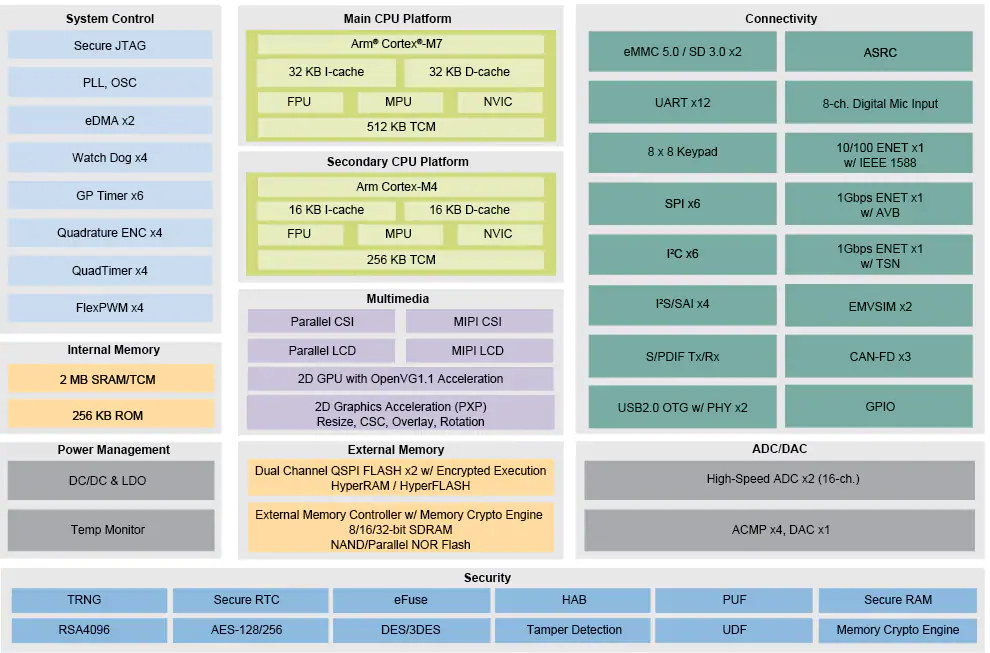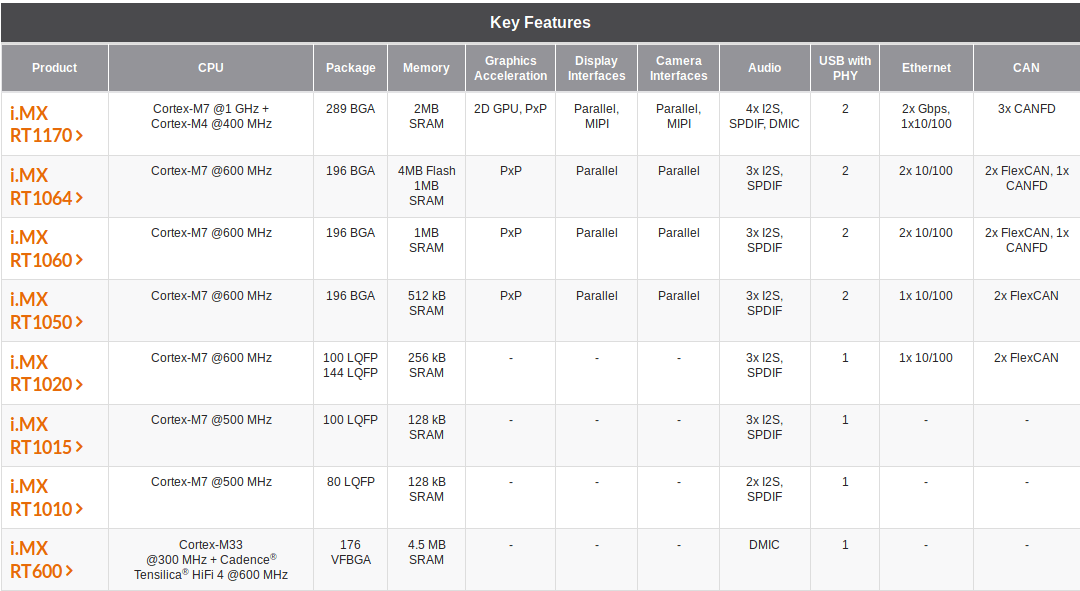Microcontrollers used to be those cute little things that clock at 8 or 16 MHz, but in the last decade, Cortex-M3/M4 microcontrollers became more powerful with 100 to 200 MHz clocks being quite common.
But with the introduction of Arm Cortex-M7 core about 5 years ago, microcontrollers are seriously starting to take over tasks that were previously reserved to faster microprocessors. As I remember it, the MCU frequency “race” started with STMicro STM32H7 in 2016 with an impressive 400 MHz, and NXP i.MX RT crossover processor clocked at 600 MHz a few years later. But with i.MX RT1170 microcontroller, NXP has upped the ante as the new MCU combines an Arm Cortex-M4 core clocked at 400MHz with Arm Cortex-M7 core running at an amazing one Gigahertz (1 GHz).

The documentation has not been released and we have limited information, but here’s what we know about NXP i.MX RT1170 key features and specifications so far:
- CPU
- Arm Cortex-M7 @ 1 GHz
- Arm Cortex-M4 @ 400 MHz
- 6468 CoreMark, 2974 DMIPS
- Graphics Accelerators – 2D GPU with OpenVG 1.1 support, PxP (pixel processing pipeline)
- Memory / Storage – Up to 512KB Tightly Coupled Memory (TCM) with ECC, 2MB SRAM
- Display I/F – Parallel and MIPI LCD up to 720p @ 60 Hz or 1080p @ 30 Hz
- Camera I/F – Parallel and MIPI CSI camera
- Audio – 4x I2S, SPDIF, DMIC
- Connectivity – 2x Gigabit Ethernet with AVB (Audio/video bridge) and TSN (Time-sensitive Networking), 1x 10/100M Ethernet
- USB – 2x USB 2.0 PHY
- Serial – 3x CANFD
- Security – EdgeLock 400A security solution, secure boot, and crypto engines
- Package – 289 BGA
- Process – 28nm FD-SOI technology
NXP i.MX RT1170 is also said to offer 12ns interrupt response time.

The new MCU/crossover process is supported by MCUXpresso SDK, IDE and configuration tools. Target applications include instrument clusters in automotive products, home appliances system control, in-home energy displays, industrial and motor control.
NXP further explains the GHz Cortex-M7 core greatly enhances machine learning performance for tasks like voice, vision and gesture recognition, natural language understanding, data analytics, and digital signal processing.
NXP i.MX RT1170 was announced at Arm Techcon 2019 and will be demonstrated at the event. The company will also showcase its sub-$1 i.MX RT1010 family and will start to offer the MIMXRT1010-EVK for $10.10 on October 10 for a limited time.
More details should eventually be posted on the product page.

Jean-Luc started CNX Software in 2010 as a part-time endeavor, before quitting his job as a software engineering manager, and starting to write daily news, and reviews full time later in 2011.
Support CNX Software! Donate via cryptocurrencies, become a Patron on Patreon, or purchase goods on Amazon or Aliexpress




